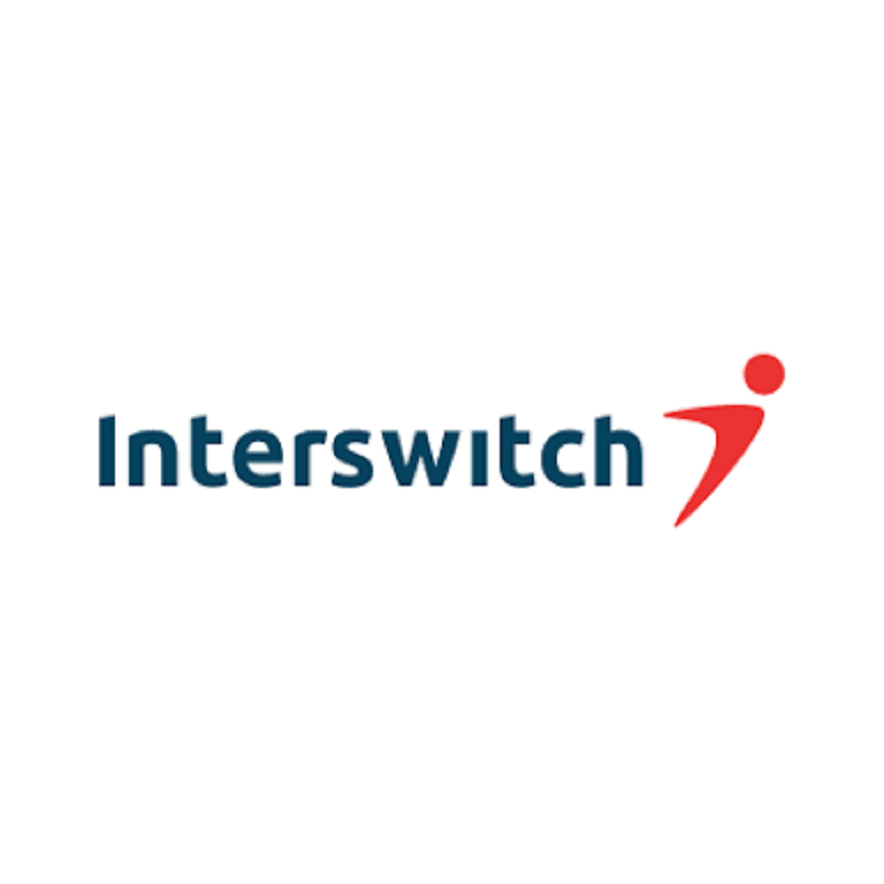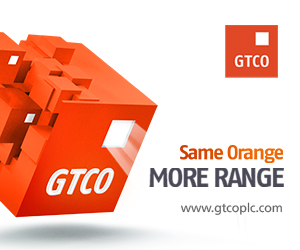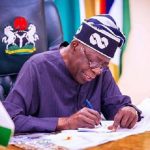Brands/Products
Buy Now Pay Later Isn’t Just About Increasing Retail Sales, it’s Also a Form of Financial Inclusion

By Eric Muli
It’s no secret that there’s still a long way to go when it comes to achieving true financial inclusion in Africa. As recently as 2021, 45% of people in sub-Saharan Africa didn’t have access to a formal bank account.
That doesn’t just make it difficult for them to save effectively, but also to access formal lines of credit.
The thing is, when most people talk about financial exclusion and the proposed solutions to it, they tend to focus on the “big” economic movers that come with financial inclusion.
A lot of attention, for example, is given to affordable home and vehicle financing and business and education loans. That’s understandable too: those are all vital tools in helping people advance economically.
But financial inclusion can’t be limited to those big-ticket items. It must also cover many of the day-to-day purchases that people in other markets take for granted. We cannot, after all, talk about real financial inclusion if someone can access a business loan but still has to approach informal lenders to pay for their child’s school uniforms and stationery.
It’s why the rise of “buy now, pay later” (BNPL) services in Africa is so important. These services allow people to purchase items and choose to pay for them over a specified period, typically in instalments with low interest rates.
Unlike lay-by offerings, people are allowed to take possession of their goods immediately. While these offerings are most visible online, they’re increasingly common in physical retail spaces too.
A personal journey
There are many examples of how BNPL can empower ordinary Africans by enhancing their purchasing power. Maybe it’s someone needing to buy a new suit for a job interview, a promising athlete needing a new pair of running spikes as they look to secure a university scholarship, or someone needing to buy a laptop to start their side hustle.
Sometimes (as I discovered myself when I returned to Kenya in 2017 after studying in the USA), it’s just about staying connected. As I trawled the malls of Nairobi looking to buy a phone (something few of us can live without), I realised that very few stores had the option to pay off a device in instalments. It came as a stark contrast to the US, where instalment plans are available almost everywhere.
But it was also a lightbulb moment that inspired the founding of Lipa Later. I realised how effective BNPL could be in the Kenyan and broader African contexts, particularly if it was adapted to the way Africans shop.
That vision was further crystallised in the early days of the business when my co-founder Michael Maina spent hours walking around malls, speaking to shoppers. Many, he found out, wanted a specific phone that was just out of reach but which they could easily pay off over a few months.
BNPL for predominantly offline markets
While many of us are familiar with BNPL in e-commerce contexts, we knew that launching an e-commerce-only BNPL product would have limited efficacy in an African context. Even in a country as renowned for embracing technology as Kenya, online made up just 4% of all retail sales in 2021 (the most recent year for which I could find figures).
But getting physical retailers on board with the concept wasn’t always easy. In the early days especially, there were a lot more noes than yeses. Nonetheless, we persisted because we knew that, implemented correctly, the BNPL solution we were building could be a “lifeline for a lifetime” for both our retailer and consumer customers.
As a result, today, we have a BNPL offering that works as effectively in offline physical retail settings as it does online. And because we’ve taken an attitude that everything about Lipa Later, from the name (Lipa is Swahili for “pay”) to the technology, should be tailored for Africa, we’ve been able to expand beyond Kenya into Uganda and Rwanda.
We also welcome the growing competition in the African BNPL space, not only because it’s pushed us to keep improving our own offering (a partnership with Mastercard means that we’ll soon be rolling out the first buy now, pay later card in Africa, for example) but also because it’ll help advance financial inclusion across Africa.
An increasingly important financial inclusion tool
While BNPL can’t eliminate debt entirely, it can make a dent in it, and with nearly 60% of Kenyans living in debt and similarly high numbers across many countries on the continent, its role will only become increasingly important.
Without having to resort to expensive informal lenders, customers can save more of their money or use it on things that improve their lives, rather than simply servicing debt. As operators become mature and innovative (rewarding the best-paying customers with even lower interest rates, for example), its value will keep growing
But consumers aren’t the only ones who benefit from this expanded financial inclusion. Retailers also benefit from increased customer bases. Those increased sales, in turn, can lead to expansion and even contribute to national economic growth.
So, as important as more traditional forms of financial inclusion are, it’s important to remember that consumer spending power is a critical component of financial inclusion, too. Tailored effectively to African realities, there are few more powerful instruments for improving that spending power than BNPL.
Eric Muli is the Founder and CEO of Lipa Later
Brands/Products
JMG Installs Solar Power Systems at Three NIPCO Fuel Stations
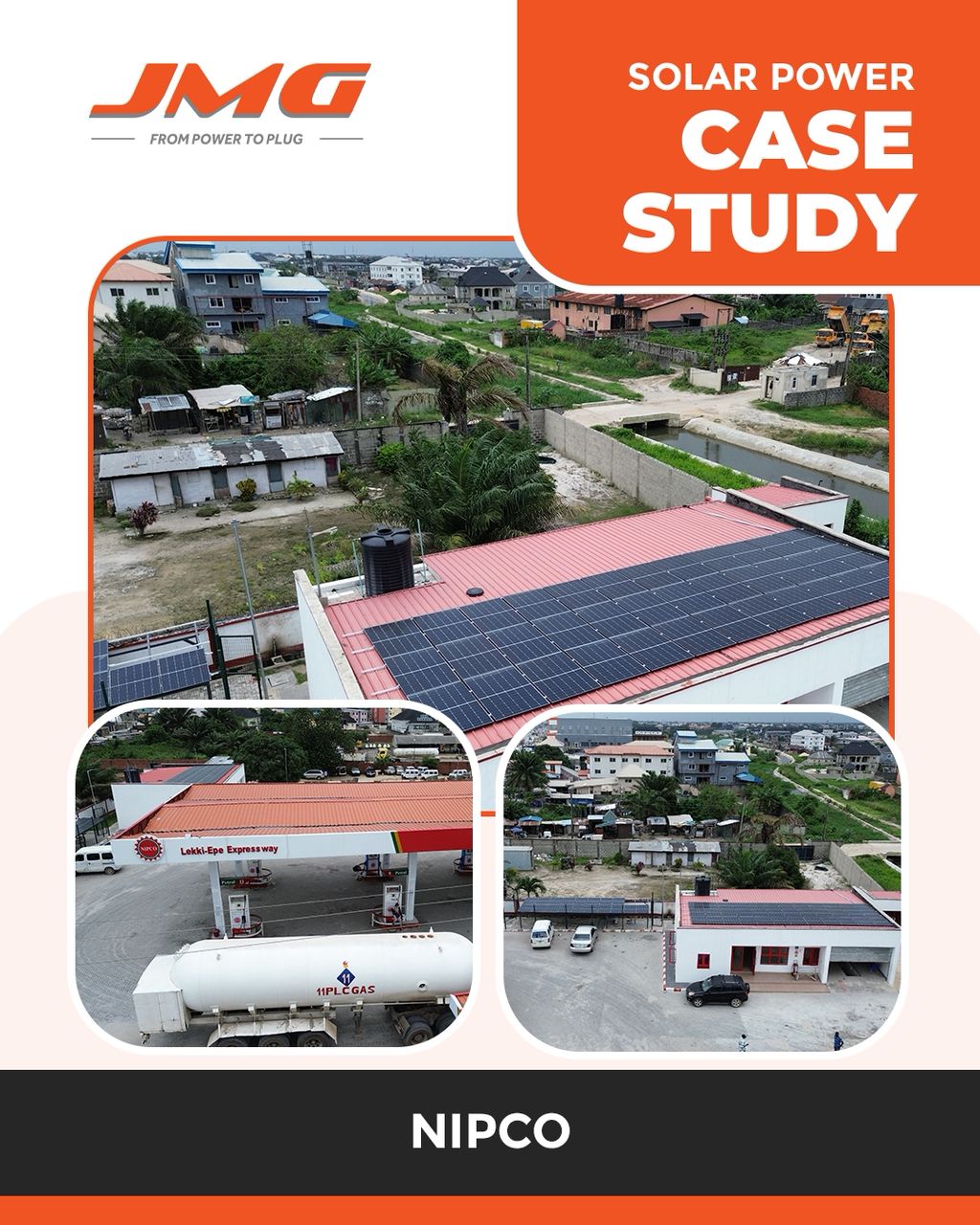
By Aduragbemi Omiyale
Nigeria’s trusted hybrid and integrated electromechanical energy provider, JMG Limited, has completed the installation of solar power systems at three key fuel stations of NIPCO Plc.
The clean energy source was installed at NIPCO’s petrol dispensing outlets in Gwagwalada Abuja, Lekki Lagos, and Mpape Abuja.
This will help the organisation eliminate diesel reliance, and unlock more than N44 million in annual energy cost savings.
The installations feature advanced hybrid systems, combining solar arrays, lithium battery storage, and smart inverters to provide 24/7 energy for fuel pumps, lighting, and office operations. Each site has reported zero use of electricity or generator power since the systems were installed.
The three NIPCO stations now run on an advanced hybrid solar system that combines high‑efficiency PV panels, intelligent lithium‑battery storage and smart inverters.
Since commissioning, the sites have operated with zero grid or generator power, providing silent, clean, uninterrupted electricity for pumps, lighting and administration.
“We are proud to help NIPCO lead the energy transition at the retail level.
“The scalable architecture can be sized to each location and has already delivered significant savings, about 88,535 kWh/year, N44.4 million in annual cost savings and a 43.8‑tonne reduction in CO₂ emissions,” the Head of JMG’s Hybrid Solar Division, Mr Abbass Hussein, stated, adding that, “Collaborating with NIPCO on this initiative demonstrates a practical pathway for other firms to reduce both emissions and energy expenses.”
Also commenting, NIPCO’s Station Manager at Gwagwalada, Mr Idoko Jacob, said, “The stations have not relied on electricity or generator power on bright-weather days since commissioning. The solar systems fully meet our daily energy needs during such periods. On days with poor weather, we supplement the solar system with generator power to ensure uninterrupted operations.”
Business Post gathered that the NIPCO Gwagwalada Station has a solar output of 42,450 kWh/year, annual savings of N15.6 million, and CO₂ reduction of 15,332.76 kg/year, with a system installed consisting of a 20kW Deye LV Hybrid Inverter, 26.8kWp Solar PV, and 51.2kWh Lithium Battery Storage.
The NIPCO Lekki Station has a solar output of 3,635 kWh/year, annual savings of N12 million, and CO₂ reduction of 13,130.1 kg/year, with a system installed consisting of a 25kW Must Hybrid Inverter, 22.95kWp Solar PV, and 76.8kWh Lithium Battery Storage.
As for the NIPCO Mpape Station, it has a solar output of 42,450 kWh/year, annual savings of N16.8 million, and CO₂ reduction of 15,332.76 kg/year, with a system installed consisting of a 20kW Deye LV Hybrid Inverter, 26.8kWp Solar PV, and 61.44kWh Lithium Battery Storage.
Brands/Products
MAGGI Unveils ‘Taste of Christmas’ Campaign

MAGGI, the culinary brand from Nestlé Nigeria, has announced the launch of its festive campaign, Taste of Christmas, designed to celebrate the sights, sounds, and flavours that define the Nigerian Christmas experience.
Central to the campaign is a collaboration with Nigeria’s fast-rising pop star Qing Madi and the renowned Loud Urban Choir, resulting in a new Christmas anthem titled Taste of Christmas.
Now available across all major music streaming platforms, the song blends contemporary sound with cultural warmth, evoking the joy of family, togetherness, and shared meals that characterize the season.
Extending beyond music, the Taste of Christmas campaign will roll out a curated series of festive recipes and culinary inspiration over a 12-day period. The collection features creative twists such as Coco Bongus, alongside beloved Nigerian classics, encouraging families to explore new flavours while enjoying MAGGI’s trusted range of seasonings.
Commenting on the campaign, the Category Manager for Culinary at MAGGI, Ms Funmi Osineye, said, “Christmas is a time when family, culture, and shared experiences come alive. With the Taste of Christmas campaign, we set out to create a platform that resonates strongly with today’s young adults while still celebrating the warmth of home. Partnering with Qing Madi and The Loud Urban Choir allows us to connect music and food in a way that feels authentic, modern, and deeply Nigerian.”
The campaign further reflects MAGGI’s commitment to celebrating home-grown talent, nurturing culinary creativity, and strengthening the role of food as a unifying force in Nigerian homes.
Consumers can access festive recipes, campaign content, and the Taste of Christmas anthem on MAGGI’s digital platforms and social media channels. Conversations around the campaign can be followed using #MAGGIChristmas.
MAGGI is a leading culinary brand from Nestlé Nigeria, committed to inspiring better cooking habits and bringing families together through delicious, nutritious meals.
Brands/Products
FG Suspension of Sachet Alcohol Ban Excites NECA

By Modupe Gbadeyanka
The decision of the federal government to suspend the ban on alcohol produced in sachets has been welcomed by the Nigeria Employers’ Consultative Association (NECA).
The Director-General of the group, Mr Adewale-Smatt Oyerinde, described it as a right step in the right direction because it respects existing National Assembly resolutions and restores regulatory clarity.
Recall that recently, the Office of the Secretary to the Government of the Federation (OSGF) ordered the suspension of the policy due to concerns raised by the House of Representatives Committee on Food and Drugs Administration and Control.
In a statement, the NECA chief said the immediate suspension of all enforcement actions relating to the proposed ban on sachet alcohol and 200ml PET bottle products, pending the conclusion of consultations and the issuance of a final policy directive, was good for the industry and the economy.
According to him, the sachet and PET segment of the alcoholic beverage industry accounts for a significant portion of the estimated N800 billion invested in the sector and supports thousands of direct and indirect jobs in manufacturing, packaging, logistics, wholesale and retail.
He stressed that in an economy already struggling with high unemployment and rising business costs, abrupt policy measures that threaten existing jobs and legitimate investments would be counterproductive.
“We fully acknowledge the need to address public health concerns, especially regarding children and young people, but the solutions must be evidence-based and carefully designed so as not to drive activities into the informal and unregulated economy or encourage illicit products.
“We are looking forward to a deepened consultation to enable the protection of jobs, livelihoods and legitimate investments, etc., while also ensuring that public health objectives are effectively and sustainably achieved,” Mr Oyerinde said.
-

 Feature/OPED6 years ago
Feature/OPED6 years agoDavos was Different this year
-
Travel/Tourism9 years ago
Lagos Seals Western Lodge Hotel In Ikorodu
-

 Showbiz3 years ago
Showbiz3 years agoEstranged Lover Releases Videos of Empress Njamah Bathing
-

 Banking8 years ago
Banking8 years agoSort Codes of GTBank Branches in Nigeria
-
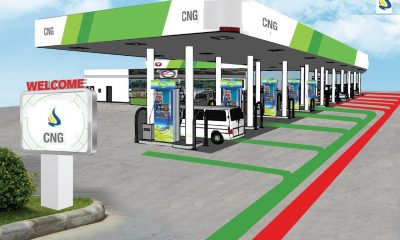
 Economy3 years ago
Economy3 years agoSubsidy Removal: CNG at N130 Per Litre Cheaper Than Petrol—IPMAN
-

 Banking3 years ago
Banking3 years agoFirst Bank Announces Planned Downtime
-

 Banking3 years ago
Banking3 years agoSort Codes of UBA Branches in Nigeria
-

 Sports3 years ago
Sports3 years agoHighest Paid Nigerian Footballer – How Much Do Nigerian Footballers Earn









